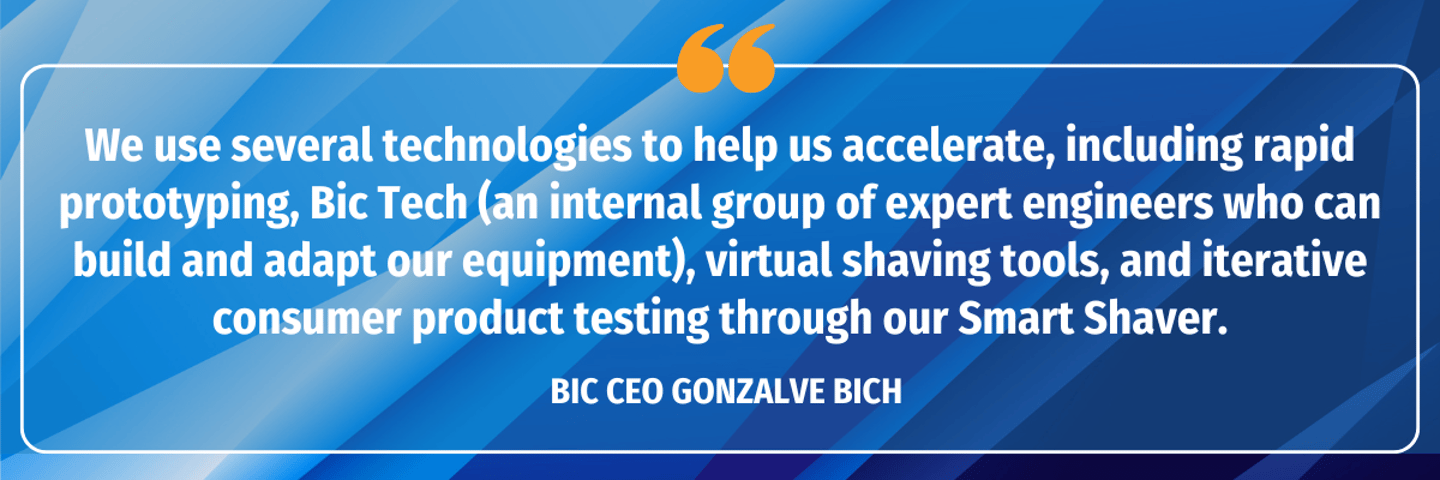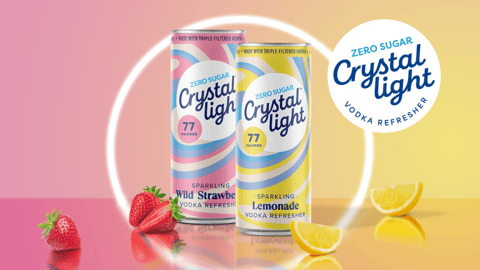How Bic Is Expediting Innovation With AI, ML & Consumer Insights
To stay competitive and create differentiated products, Bic targets one big category innovation every four to five years, doing so with the help of technologies like artificial intelligence and machine learning along with consumer-centric analytics.
As a result, the manufacturer is in a constant state of innovation, running through a product development cycle that ranges from 12 months (with external help) to three years (for bigger technical projects) for each of its lighter, pen, and razor launches, CEO Gonzalve Bich tells CGT.
Getting to the Heart of the Business
At the core is a data-powered approach that has helped Bic stay relevant with its consumers by using behavioral insights to inform new product development.
This includes real-time social listening to scan online conversations and product reviews so Bic can quickly react to category trends and behaviors, as well as optimize campaigns, communications, and products.
"At Bic, our consumer-centric approach keeps us focused on evolving consumer demands. We prioritize developing products that directly offer solutions and add value,” says Bich.
Through social listening in combination with ethnographic, qualitative, quantitative, and behavioral research, the company is able to more deeply understand consumers’ needs and pain points, he says. This data forms the basis for each innovation brief.
[Estée Lauder is using an AI innovation lab to expedite its R&D and social listening practices.]
As an example, Bich points to EZReach, which launched with the help of insights that showed consumers are using lighters for multiple occasions throughout their lives, some of which, like lighting candles for a celebration, require more distance between the fingers and the flame than is provided by a standard pocket lighter.
The company also leverages consumer data through its connected devices like its Smart Shaver. The product has network connectivity and collects information like the number of shaving strokes, force, humidity, etc., which is then used to develop future shaving products.
A Tech-Supported Strategy
The company combines these efforts with technologies like artificial intelligence, simulations, 3D printing, and machine learning to refine processes and expedite time to market.
For example, the company taps machine learning and mobile app technology to help support the development of connected devices like the Smart Shaver mentioned above.
"Digital and AI technologies play a crucial role in the functioning and development of these connected devices since they enable the devices to interact with the physical world by collecting data and executing actions," he says. "The fusion of digital and AI technologies is what makes connected devices 'smart.'"
Bic is also currently implementing generative AI along several stages of the innovation funnel, including automating data ingestion and analysis. The technology quickly digests consumer studies and market data to identify areas of opportunity and generate initial product and design ideas. The company also uses this technology to segment ideas by key themes and create simulations to gauge potential consumer sentiment.
Within its rapid prototyping operations, Bic is using 3D printing and soft tooling prototypes to create and test prototypes and address challenges early on and quickly.
Additionally, to keep an eye toward sustainability in its product development, Bic designers use a tool called Environmentally and Socially Measurable Advantage (EMA) to create a baseline sustainability score and help them consider more eco-friendly and recyclable materials. Established in 2020, the tool ensures that any future innovations or product modifications receive a higher eco score compared to the baseline of similar products.
“This iterative process has already helped us improve the sustainability of more than 30 products,” says Bich. “We are making more pens with the same quality using less plastic. Our iconic Bic Cristal pen may look unchanged, but it’s constantly evolving. In 1950, the barrel weighed 4.4 grams, while today, our value engineering approach has helped us reduce it to 3.1 grams, without any loss in quality.”
R&D Built on Partnership and Feedback
Bic’s innovation operations are comprehensive, including over 200 people working in R&D and about 2,700 active patents (with dozens of new patents filed yearly). The company’s R&D innovation is a result of multiple internal and external collaborators or what Bich says is an ecosystem of industry players (startups, universities, OEMs, and tech companies).
This includes working with tech company Iprova to build an in-house data-driven invention lab so the company can better anticipate and respond to changing consumer needs via “unexpected inventions.”
“We leverage them to increase our chances of solving real problems and creating value for our customers and users,” he says. “Connecting R&D teams with external expertise is important for us because it can accelerate innovation cycles and bring new products and services to market faster, mitigate risk, and foster a culture of open innovation.”
Other partnerships include working with Plug N Play to source and connect with startups who can expedite testing and development and feed Bic’s innovation and M&A pipeline. Also, the company frequently works with MIT’s faculty and research staff, leveraging the MIT-connected startups in the Boston Innovation Hub to facilitate tech transfers and further develop proofs of concepts.
Collaboration keeps the innovation machine running smoothly, with agile practices managing iterative development with continuous product testing, expedited incubation and ideation, rapid small-scale design, and expert product performance validation, says Bich.








